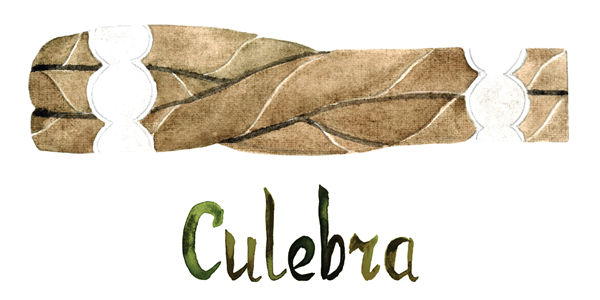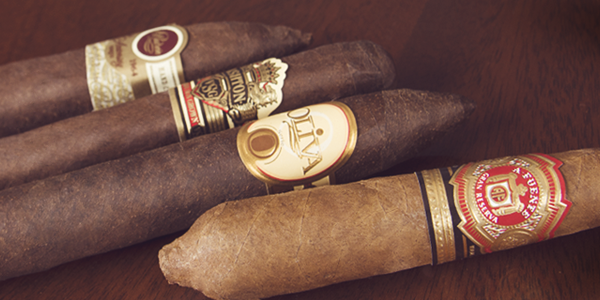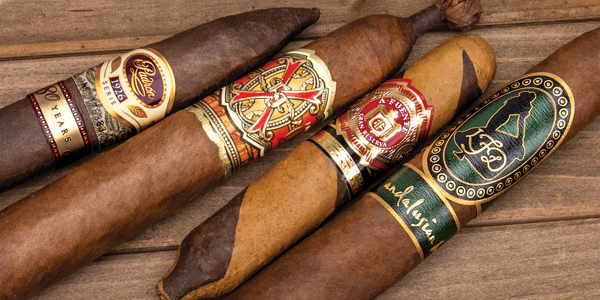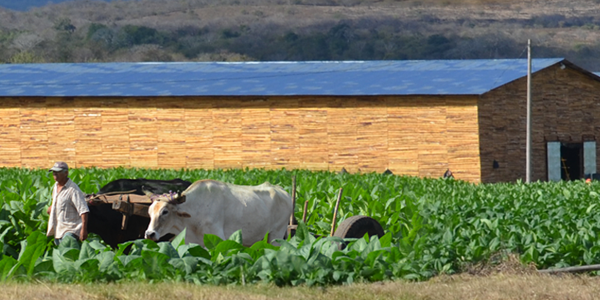Culebra Cigars: What Are They & How Do You Smoke Them?
I laughed and laughed. Then I felt bad for the young man at the wedding I was attending. The reception was almost over and this college boy had been given a cigar by the father of the bride (the friend who invited me), but this was not just any cigar. It was a Partagás Culebra.
Or should I say, they were a Partagás Culebra? What made me laugh was that the young man, who happened to be the younger brother of the groom and who was a constant source of annoyance to my host, had somehow decided that the three cigars that make up the Culebra, were to be smoked as though they were a single cigar (more on this later). I really couldn’t understand how he thought he was going to accomplish this, assuming he had normal cognitive abilities, until I glimpsed my friend who was looking at the same thing I was. He had given the boy the cigar(s) and apparently had also mischievously instructed him how to light and smoke it. Cruel, I thought. Funny though. My friend caught my eye and winked, then bellowed out a laugh, turned around and left the room. I suppressed my laughter, sidled up to the novice cigar-smoker, and corrected his error. He blushed as I unraveled the three cigars, then thanked me by giving me one.
What Is a Culebra?
The word culebra is Spanish for snake. The Culebra cigar is a trio of cigars – usually underfilled Panetelas, 6 x 38 – that snake around one another (braided) and are usually secured at both ends with ribbons. In the case of the Partagás, all three cigars were the same and one large, wide cigar band wraps around all of them. When, as is the case with the Davidoff Discovery Culebra, the trio is comprised of a Nicaragua, a Yamasa, and an Escurio cigar. So, each cigar has a small band with its name at the foot. Some Culebras have four cigars coiled together, but you don’t see many of them anymore.
Origins of the Culebra
The earliest reference to the Culebra cigar comes from the Auckland Star, a New Zealand newspaper, that in 1890 reported the Compañia General de Tabacos Filipinas (the General Tobacco Company of the Philippines), established in 1881, was producing the cigar. The 2003 book, An Illustrated Encyclopedia of Post-Revolution Havana Cigars agreed: “The Culebra first appeared in the Philippines circa mid-19th Century, a Philippines cigar industry invention.” There’s also evidence that the Culebra was being made in the United States around the same time.
Tony Hyman, a well-regarded cigar historian, has shown a photo of a box of 1890 Culebras made by the F.P. Filbert Cigar Co. of Eaton, Ohio. The cigars were dubbed, “Filbert’s Twisters.” Other examples of U.S.-made “twisters” are the 1914 “Twisted Smoke,” a four-cigar Culebra from the A.C Brenkle Company (Milwaukee) and a three-cigar version, the “Cuban Twist,” also from Wisconsin. Most historians place the start of the Culebra between 1880 and 1885.
How the Culebra Is Made
First, the cigars – usually Panetelas – are purposely underfilled. This allows for braiding the cigars without breaking them or cracking the wrappers. The tobacco, in this case, is wetter than usual so that the cigars remain flexible while they are being manipulated.
The cigars, let’s say three of them, are then tied together at one end, about a half-inch down, then braided together. Usually there are no more than two or three twists in each Culebra, but that depends on the length of the cigars. Once fully coiled, the cigars are tied off again. Tying the ends together holds the cigars in place so that they can ultimately retain their twisted shape as they age. Some makers use cigar bands, some don’t. Some place a large cap on top of all the cigars.
How to Smoke the Culebra
Okay, that kid who tried to smoke the three cigars all together, just didn’t know what he was doing. He had clipped only one cigar’s cap and tried to light all three. Now, the truth is, you can smoke all three cigars at once, but I wouldn’t recommend it. Instead, share with friends.
To smoke the Culebra, untie the strings and remove any band or cap. The draw on these twisted cigars is usually pretty good, but I have found some inconsistencies, especially among the Cuban brands. (No surprise.) I would not, however, say that the Culebra is the best-smoking cigar and some of that may be due to its being underfilled.
Sure, But Why?
One story, that has no evidence supporting it, is that cigar factory workers were given an allotment of three cigars a day for personal use. The management of these factories supposedly thought it would be easier to keep track of and prevent the theft of more cigars if the allotted three cigars were twisted and tied together.
The best guess as to why any cigar-makers made the Culebra was to offer it as a novelty cigar. It’s not particularly practical to carry around. It won’t fit in your expensive leather cigar case. I mean, that’s what the Auckland Star called it back in 1890: “A novelty…formed of three cigars plaited together.”
The Culebra Today
When the Culebra began to be made in Cuba is unclear, but more testimony in support of the “novelty” argument is that today only three brands have offered the shape since the Castro revolution. In addition to Partagás, H. Upmann and Romeo y Julieta produce Culebras. Other, non-Cuban brands also make or have made Culebras. Among them are Tatuaje with The Old Man and the C; the Illusione 23 Culebra; Rocky Patel Hamlet Tabaquero Culebra; Davidoff Special C; La Flor Dominicana Culebra Especial; and the Drew Estate Medusa.







